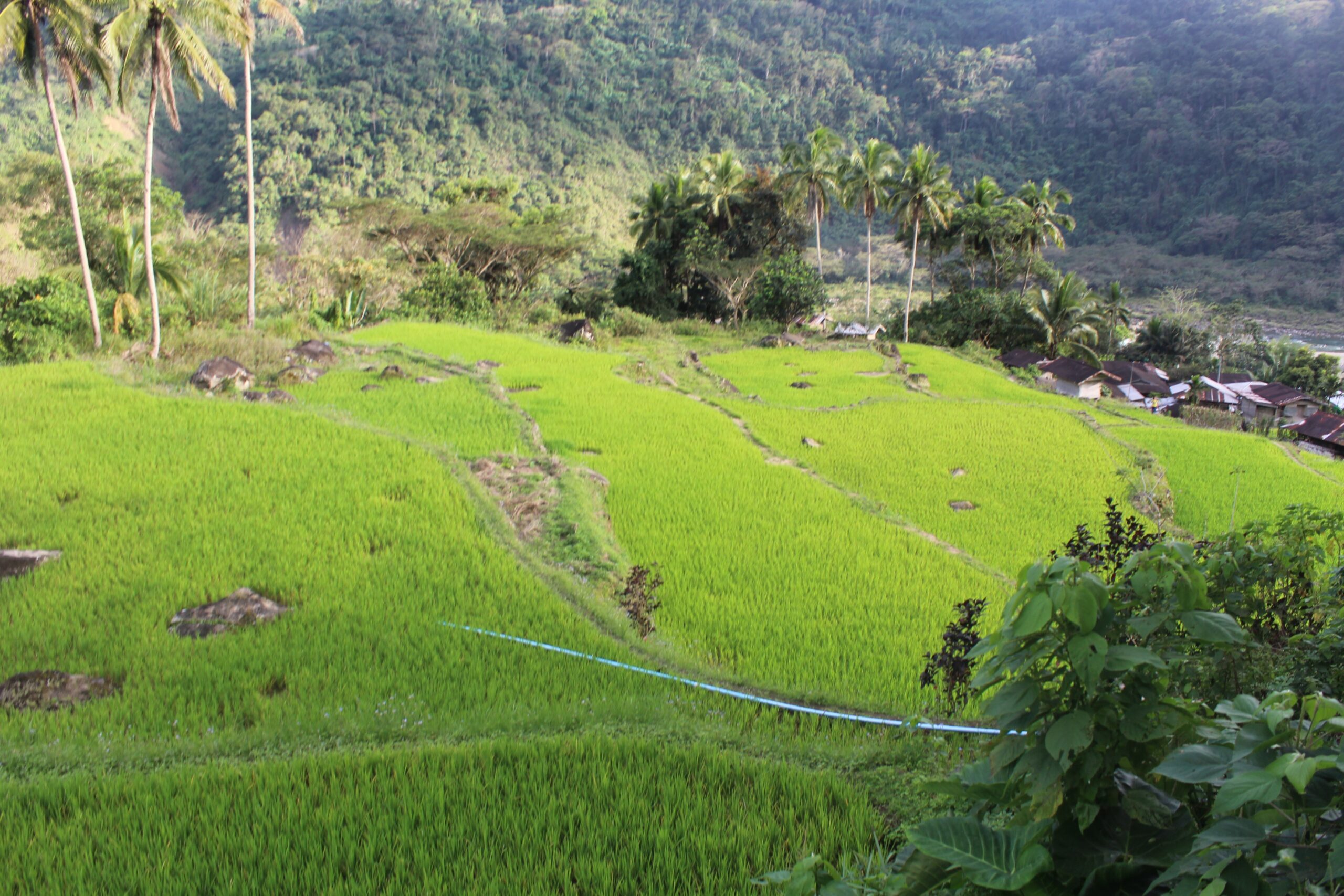Kalinga, Philippines – Despite modern times, time seemingly stood still for local farmers in a remote village in the Cordilleras due to their backward farming methods. Using bare hands, bolos, and carabaos, local farmers from Sitio Sukiap of Barangay Tanglag cultivate their lands to provide food on their tables. However, their produce remains scant and unable to sustain their families’ needs.
Sitio Sukiap lies in Barangay Tanglag, Lubuagan, in the province of Kalinga. Rain-fed agriculture and pastoralism are the principal economic activities in the community. The main products consist of rice, beans, corn, and vegetables; while its secondary products include coffee, tiger grass, among others. Other sources of livelihood include handicrafts, small stores, and raising chickens. The community can produce rice twice a year.
The open fields of Sitio Sukiap are an amazing attestation of God’s creativity, but poverty lingers all over the place. Jesus Otal, 56 years old, a local farmer and chairman of the people’s organization in the village, is a skilled farmer, yet he cannot grow enough food to feed his family. He and his family are among those smallholder farmers vulnerable to food insecurity.
For one, the village lacks sources of potable water and post-harvest facilities. Second, the road development project atop the community causes siltation to the water that flows through the community. Third, extreme weather conditions exacerbate food scarcity in the community. When Typhoon Ompong (known internationally as Mangkhut) struck the village, bringing in heavy rains and blustery winds, it caused unimaginable damage to Sitio Sukiap.
“The rains were so powerful that it destroyed our crops, homes, and caused erosion in our farmlands,” Jesus recalled.
Jesus and his family may have survived the storm, but hunger looms following the destruction caused by the typhoon on their livelihood. Jesus plants rice grains in the lower portions of plains in Tanglag, which is also home to his family. Losing everything to the storm, the old farmer can only accept the harsh reality of being a farmer. As the folk song goes, “Magtanim ay ‘di biro,” (farming is not fun) especially if it is nature that seems to poke fun.
Typhoon Ompong was one of the strongest typhoons that made landfall in the country in 2018. Among the hardest hit were the uplands of the Cordillera Region.
As the leader of the community organization, Jesus immediately reported the havoc caused by the typhoon. Cordillera Disaster Response and Development Services, Inc. (CorDisRDS), a non-profit organization based in Kalinga, immediately responded, and distributed 25 kilos of rice and food packages to all households.
The local formers only rely on rainfall for water, which yields low harvests and makes them prone to food insecurity, especially during the drought season. The plains of Sitio Sukiap only allow Jesus to sow and harvest once a year due to the lack of water supply in the area. The situation worsened during the prolonged drought in the past few years, resulting in low production and reduced incomes. Thus, the community members usually endure hunger for about 4 to 5 months every year. This condition pushes the farmers to turn to swidden farming or kaingin. However, this method is said to contribute to environmental degradation and vulnerability to disasters such as rain-induced landslides.
The CorDisRDS, in partnership with international humanitarian aid organization Diakonie Katastrophenhilfe and CDRC, selected Jesus’ community as one of its beneficiaries. It organized a series of meetings with the residents to find out their main problems and draw solutions. To address hunger and food insecurity, water is essential both for household consumption and farm irrigation. Jesus, along with his fellow village residents, decided to make their dreams come true. With the support of CDRC, community residents joined in the construction of their communal irrigation system. Community involvement in planning and construction ensured the smooth implementation of the project. Six months after, their collective efforts bore fruit. The communal irrigation now provides a steady supply of water throughout the year, benefitting about 69 households and 2.5 hectares of farmlands. The local farmers are now anticipating an increased annual yield of about 20 to 30 cavans and more cropping. The communal irrigation is expected to provide Jesus and his family with a guaranteed and reliable food production that can feed them all year through.
But there is more to it than slowly overcoming hunger and food scarcity. The CorDisRDS witnessed something so valuable to cherish—it is the camaraderie, unity, and perseverance of the community members to help each other recover. The heavy work became light as the spirit of volunteerism prevailed among community members. While the project provided materials needed for the construction, it was the community’s collective efforts that ensured the completion of the water irrigation and kept the costs low.
“The water irrigation makes our rice fields bloom, and so do our hearts,” Jesus said.

